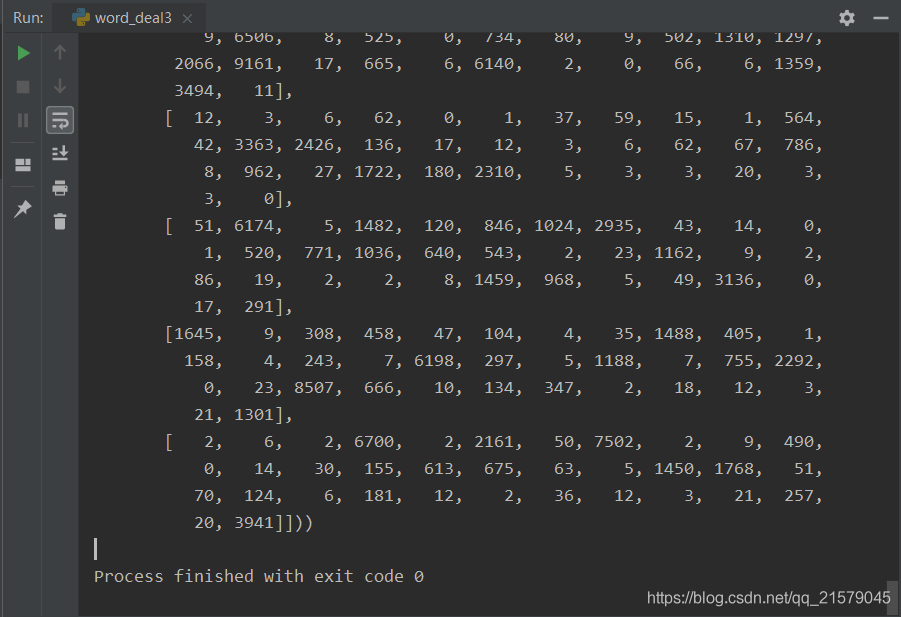参考书
《TensorFlow:实战Google深度学习框架》(第2版)
从文本文件中读取数据,并按照下面介绍的方案将数据整理成batch。
方法是:先将整个文档切分成若干连续段落,再让batch中的每一个位置负责其中一段。
#!/usr/bin/env python # -*- coding: UTF-8 -*- # coding=utf-8 """ @author: Li Tian @contact: 694317828@qq.com @software: pycharm @file: word_deal3.py @time: 2019/2/23 16:36 @desc: 从文本文件中读取数据,并按照下面介绍的方案将数据整理成batch。 方法是:先将整个文档切分成若干连续段落,再让batch中的每一个位置负责其中一段。 """ import numpy as np import tensorflow as tf # 使用单词编号表示的训练数据 TRAIN_DATA = './ptb.train' TRAIN_BATCH_SIZE = 20 TRAIN_NUM_STEP = 35 # 从文件中读取数据,并返回包含单词编号的数组 def read_data(file_path): with open(file_path, "r") as fin: # 将整个文档读进一个长字符串 id_string = ' '.join([line.strip() for line in fin.readlines()]) # 将读取的单词编号转为整数 id_list = [int(w) for w in id_string.split()] return id_list def make_batches(id_list, batch_size, num_step): # batch_size: 一个batch中样本的数量 # num_batches:batch的个数 # num_step: 一个样本的序列长度 # 计算总的batch数量。每个batch包含的单词数量是batch_size * num_step num_batches = (len(id_list) - 1) // (batch_size * num_step) # 将数据整理成一个维度为[batch_size, num_batches*num_step]的二维数组 data = np.array(id_list[: num_batches * batch_size * num_step]) data = np.reshape(data, [batch_size, num_batches * num_step]) # 沿着第二个维度将数据切分成num_batches个batch,存入一个数组。 data_batches = np.split(data, num_batches, axis=1) # 重复上述操作,但是每个位置向右移动一位,这里得到的是RNN每一步输出所需要预测的下一个单词 label = np.array(id_list[1: num_batches * batch_size * num_step + 1]) label = np.reshape(label, [batch_size, num_batches * num_step]) label_batches = np.split(label, num_batches, axis=1) # 返回一个长度为num_batches的数组,其中每一项包括一个data矩阵和一个label矩阵 print(len(id_list)) print(num_batches * batch_size * num_step) return list(zip(data_batches, label_batches)) def main(): train_batches = make_batches(read_data(TRAIN_DATA), TRAIN_BATCH_SIZE, TRAIN_NUM_STEP) # 在这里插入模型训练的代码。训练代码将在后面提到。 for i in train_batches: print(i) if __name__ == '__main__': main()
运行结果:
